 |
|
Ancient Theater in Turkey Aspendos |
||||||||||||
|
|
|
|||||||||||
|
||||||||||||
|
The theatre of Aspendos is of Roman origin. The stage house has been preserved at its full height and, together with the theatres in Orange (southern France) and Bosra (Syria), is thus one of the last three ancient theatres with a fully intact stage house. Below the crown of the wall, the entrances can still be seen, on which an inclined wooden construction rested, which spanned the stage and provided even better acoustics. The cavea has 39 rows of seats divided by a diazoma. Since the Seljuks used the theatre as a caravanserai in the Middle Ages, it was continuously repaired and repaired after earthquakes. This explains the good state of preservation compared to other theatres of that time. In 2015, on behalf of the Ministry of Tourism and Culture, new seats made of snow-white marble were installed between the original grey steps. Unfortunately, it has to be stated that this procedure is not an isolated case. The appearance of many antique theatres has suffered considerably from the use of such marble. Examples are the theatres of Telmessos (Fethiye) and Rhodiapolis. |
||||||||||||
| The history of Aspendos: | ||||||||||||
|
According to Greek tradition, Aspendos was founded around the 12th century BC by settlers from the Peloponnesian Argos. The legendary seer Mopsos, who was also revered by cities such as Perge as the city father, was considered one of the founders.
Little is known about their Greek history - excavations can certainly bring more knowledge about the pre-Roman epoch in the future. The Battle of Eurymedon is literarily documented. As a port city, Aspendos was formerly connected to the sea by the Eurymedon River (now Köprü Çayı) and thus achieved lasting prosperity. In the last battle of the Persian Wars, the Athenian general and fleet commander Kimon defeated the Persians there in a double battle on land and sea in 466 BC. Since then Eurymedon politically marked the separation of the spheres between the eastern Persian sphere of influence and the Greek Asia Minor in the west. In the Byzantine period the city was called Primoupolis for a time. Aspendos was the seat of a bishop; the titular bishopric of Aspendos of the Roman Catholic Church goes back to the bishopric. |
||||||||||||
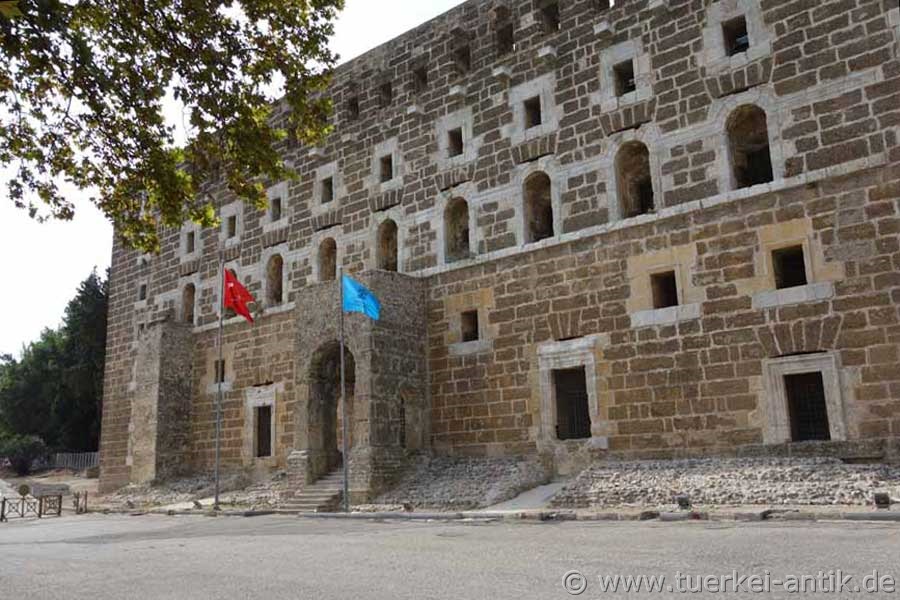 |
||||||||||||
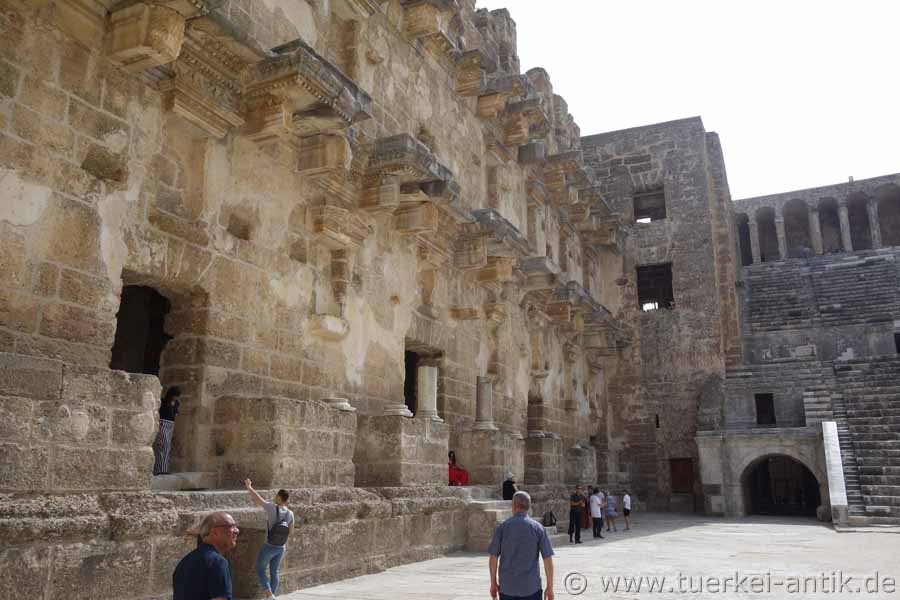 |
||||||||||||
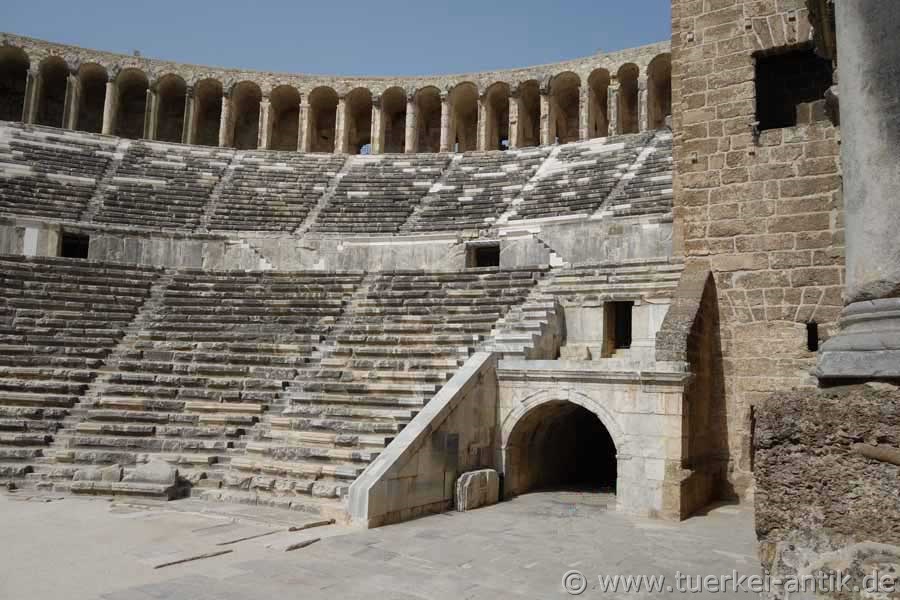 |
||||||||||||
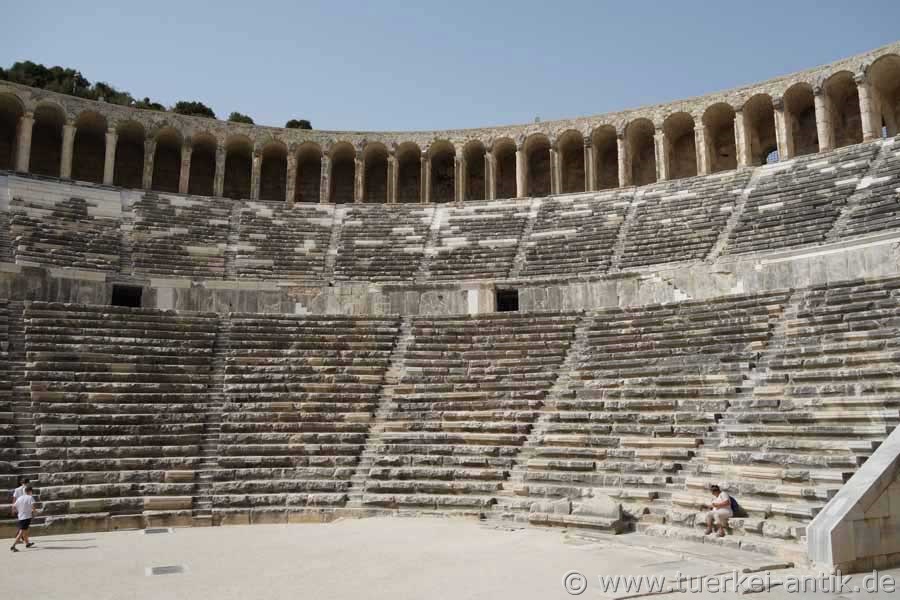 |
||||||||||||
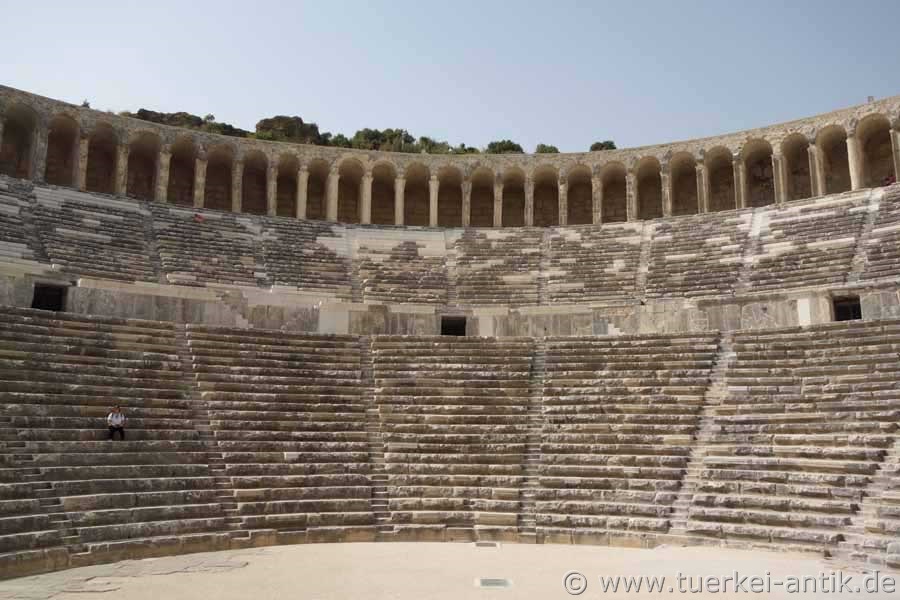 |
||||||||||||
|
|
||||||||||||
 |
||||||||||||
|
The drawing (after Karl Graf Lanckoroński) shows the graphic reconstruction of the side of the stage wall facing the spectator (scaena_frons). Below the crown of the wall, the recesses on which the diagonal wooden construction drawn here rested, which spanned the stage and provided even better acoustics, can still be seen today. |
||||||||||||
|
|
||||||||||||
|
|
||||||||||||
| Photos: @chim | ||||||||||||
| Translation aid: www.DeepL.com/Translator | ||||||||||||
| Source: Wikipedia and others | ||||||||||||
|
|
||||||||||||

